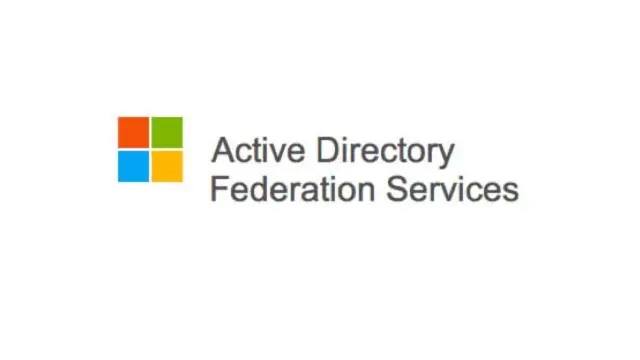Active Directory Federation Services, or ADFS in short, is a technology developed by Microsoft that plays a crucial role in managing user identities and providing secure access to various applications, both within and outside an organization’s network. In essence, ADFS allows different systems to trust and authenticate users from one trusted source, typically your organization’s Active Directory.

Table of Contents
Why do we need Active Directory Federation Services (AD FS)?
In today’s digital world, users often need access to multiple applications and services, both on-premises and in the cloud. However, managing separate accounts and passwords for each of these services can be cumbersome, inefficient, and potentially insecure. This is where Active Directory Federation Services comes into the picture.
Active Directory Federation Services allows organizations to enable Single Sign-On (SSO), which means that once a user logs in to their network using their credentials, they can access multiple applications and services without having to log in again. This not only improves the user experience but also enhances security by centralizing authentication.
Components of AD FS:
Active Directory Federation Services consists of several key components:
1. ADFS Server: This is the heart of the ADFS infrastructure. The ADFS server hosts the ADFS service, which handles authentication and authorization requests. Typically, an organization would have multiple ADFS servers for redundancy and load balancing.
2. Active Directory: ADFS relies on your organization’s Active Directory to authenticate users. Active Directory stores user accounts, groups, and their authentication information.
3. Federation Trust: A key concept in ADFS is the establishment of trust relationships between different organizations. This trust is known as a Federation Trust. It allows users from one organization to access resources in another organization without needing separate accounts.
4. Claims Provider Trust: ADFS uses claims-based authentication. Instead of just verifying a username and password, ADFS creates claims or statements about the user. Claims can include information like the user’s name, email, or group memberships. The Claims Provider Trust defines how claims are issued and accepted.
5. Relying Party Trust: A relying party is a service or application that trusts ADFS for user authentication. Relying Party Trusts define how ADFS interacts with these services. Each relying party trust specifies which claims are required and how users should be authenticated.
How ADFS Works
1. User Requests Access: A user wants to access a web application or service. They open their web browser and navigate to the application’s login page.
2. Redirect to ADFS: Instead of directly logging in, the user is redirected to the ADFS server’s login page. This step ensures that the user’s identity will be verified by ADFS.
3. Authentication: The user provides their credentials, typically their username and password, to the ADFS server. The ADFS server validates these credentials against the Active Directory.
4. Claims Issuance: Once the user is authenticated, the ADFS server generates claims about the user. These claims may include their username, group memberships, and other relevant information.
5. Relying Party Trust: The ADFS server communicates with the relying party (the application or service the user wants to access). It presents the claims and requests access on behalf of the user.
6. Access Granted: If the relying party trusts ADFS and accepts the claims presented, it grants the user access to the application or service. The user is logged in without needing to enter their credentials again.
Benifits of AD FS
1. Single Sign-On (SSO): Users only need to log in once, making it easier and more convenient to access multiple services.
2. Centralized Identity Management: ADFS centralizes identity and access control, simplifying administration and improving security.
3. Security: ADFS enhances security by providing a layer of authentication and authorization before granting access to applications and services.
4. Federation: It enables secure collaboration with external partners and organizations, allowing users to access resources across organizational boundaries.
5. Compliance: ADFS helps organizations meet regulatory and compliance requirements by controlling access to sensitive data and resources.
FAQs

1. What is Active Directory Federation Services (AD FS)?
Active Directory Federation Services (AD FS) is a Microsoft technology that enables secure single sign-on (SSO) and simplifies authentication across various applications and services.
2. Why is SSO important, and how does AD FS help with it?
Single sign-on means you only need one login for multiple services, making it more convenient and secure. AD FS achieves this by acting as an authentication bridge.
3. Can AD FS be used with non-Microsoft applications and services?
Yes, AD FS can work with a wide range of applications and services, both Microsoft and non-Microsoft, that support standard authentication protocols like SAML, OAuth, and OpenID Connect.
4. Is AD FS only for large organizations?
No, AD FS can be beneficial for organizations of all sizes, especially if they use multiple applications and want to simplify user access.
5. Is AD FS a cloud-only solution, or can it be used on-premises too?
AD FS can be deployed both on-premises and in the cloud, allowing flexibility in how organizations manage identity and access.
6. What is the role of claims in AD FS?
Claims are pieces of information about a user, like their name or role. AD FS uses claims to make access decisions, ensuring that the right people get the right access.
7. Is AD FS secure, and how does it protect user data?
AD FS employs strong security measures, including token-based authentication and encryption, to safeguard user identities and data.
8. Can AD FS integrate with other identity management systems?
Yes, AD FS can integrate with other identity systems, making it versatile for various IT environments.
9. What is the difference between AD FS and Azure Active Directory (Azure AD)?
AD FS is primarily used for on-premises identity federation, while Azure AD is a cloud-based identity and access management service. They can work together in a hybrid setup.
10. How can an organization get started with AD FS implementation?
To get started with AD FS, an organization needs to set up the AD FS server, configure trust with applications, and define access policies. It’s recommended to consult Microsoft’s documentation or seek assistance from IT professionals.
To learn more about different types of attacks, please click here.
